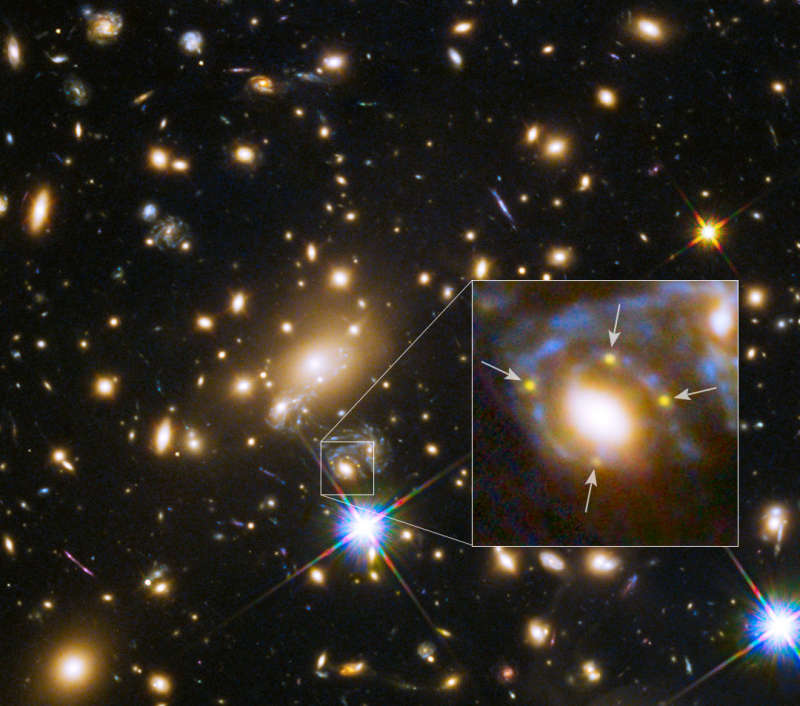
|
Credit & Copyright: NASA,
ESA, and
S. Rodney
(JHU) and the FrontierSN team;
T. Treu
(UCLA),
P. Kelly (UC Berkeley), and the GLASS team;
J. Lotz (STScI) and the
Frontier Fields team;
M. Postman
(STScI) and the
CLASH team; and
Z. Levay
(STScI)
Explanation:
What are the unusual spots surrounding that galaxy?
They are all images of the same supernova.
For the first time, a single supernova explosion has been
seen split into
multiple images by the
gravitational lens deflections of intervening masses.
In this case the masses are a large galaxy and its home
galaxy cluster.
The featured image was captured last November by the Earth-orbiting
Hubble Space Telescope.
The yellow-hued
quadruply-imaged Supernova
Refsdal
occurred in the early universe far behind the cluster.
Measuring the locations and time-delays between the
supernova images
should allow astrophysicists to
recover
the amount of
dark matter
in the galaxy and cluster.
With patience and
luck, a fifth image of the
supernova
will also be recovered
nearby in the next few years.
Astrophysicists:
Browse 1,000+ codes in the Astrophysics Source Code Library
|
January February March April May June July August September October November December |
| |||||||||||||||||||||||||||||||||||||||||||||||||||||||
NASA Web Site Statements, Warnings, and Disclaimers
NASA Official: Jay Norris. Specific rights apply.
A service of: LHEA at NASA / GSFC
& Michigan Tech. U.
Based on Astronomy Picture
Of the Day
Publications with keywords: supernova - gravitational lens - galaxy cluster
Publications with words: supernova - gravitational lens - galaxy cluster
See also:
- APOD: 2023 October 11 Á NGC 1097: Spiral Galaxy with Supernova
- Galaxy Cluster Abell 370 and Beyond
- Webb's First Deep Field
- APOD: 2023 July 9 Á Doomed Star Eta Carinae
- APOD: 2023 May 22 Á Supernova Discovered in Nearby Spiral Galaxy M101
- APOD: 2023 January 18 Á MACS0647: Gravitational Lensing of the Early Universe by Webb
- Supernova Cannon Expels Pulsar J0002
